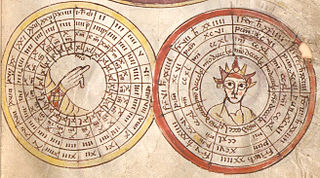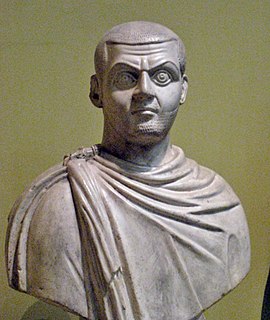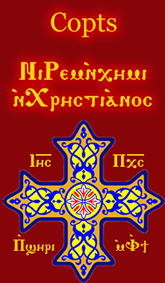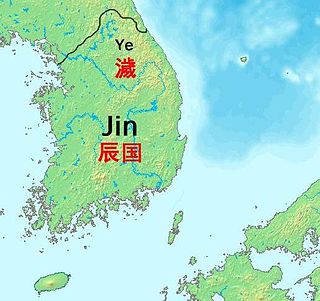
The traditional Chinese calendar, is a lunisolar calendar which reckons years, months and days according to astronomical phenomena. In China it is defined by the Chinese national standard GB/T 33661–2017, "Calculation and promulgation of the Chinese calendar", issued by the Standardisation Administration of China on May 12, 2017.

The Roman calendar was the calendar used by the Roman kingdom and republic. The term often includes the Julian calendar established by the reforms of the dictator Julius Caesar and emperor Augustus in the late 1st century BC and sometimes includes any system dated by inclusive counting towards months' kalends, nones, and ides in the Roman manner. The term usually excludes the Alexandrian calendar of Roman Egypt, which continued the unique months of that land's former calendar; the Byzantine calendar of the later Roman Empire, which usually dated the Roman months in the simple count of the ancient Greek calendars; and the Gregorian calendar, which refined the Julian system to bring it into still closer alignment with the tropical year.

A week is a time unit equal to seven days. It is the standard time period used for cycles of rest days in most parts of the world, mostly alongside—although not strictly part of—the Gregorian calendar.

AD 1 (I), 1 AD or 1 CE is the epoch year for the Anno Domini calendar era. It was the first year of the Common Era (CE), of the 1st millennium and of the 1st century. It was a common year starting on Saturday or Sunday, a common year starting on Saturday by the proleptic Julian calendar, and a common year starting on Monday by the proleptic Gregorian calendar. In its time, year 1 was known as the Year of the Consulship of Caesar and Paullus, named after Roman consuls Gaius Caesar and Lucius Aemilius Paullus, and less frequently, as year 754 AUC within the Roman Empire. The denomination "AD 1" for this year has been in consistent use since the mid-medieval period when the anno Domini (AD) calendar era became the prevalent method in Europe for naming years. It was the beginning of the Christian/Common era. The preceding year is 1 BC; there is no year 0 in this numbering scheme. The Anno Domini dating system was devised in AD 525 by Dionysius Exiguus.
The year 586 BC was a year of the pre-Julian Roman calendar. In the Roman Empire, it was known as year 168 Ab urbe condita. The denomination 586 BC for this year has been used since the early medieval period, when the Anno Domini calendar era became the prevalent method in Europe for naming years.

Year 313 (CCCXIII) was a common year starting on Thursday of the Julian calendar. At the time, it was known as the Year of the Consulship of Constantinus and Licinianus. The denomination 313 for this year has been used since the early medieval period, when the Anno Domini calendar era became the prevalent method in Europe for naming years. This year is notable for ending of the persecution of Christians in the Roman Empire.
Year 134 BC was a year of the pre-Julian Roman calendar. At the time it was known as the Year of the Consulship of Aemilianus and Flaccus and the First Year of Yuanguang. The denomination 134 BC for this year has been used since the early medieval period, when the Anno Domini calendar era became the prevalent method in Europe for naming years.

The Coptic calendar, also called the Alexandrian calendar, is a liturgical calendar used by the Coptic Orthodox Church and also used by the farming populace in Egypt. This calendar is based on the ancient Egyptian calendar. To avoid the calendar creep of the latter, a reform of the ancient Egyptian calendar was introduced at the time of Ptolemy III which consisted of the intercalation of a sixth epagomenal day every fourth year. However, this reform was opposed by the Egyptian priests, and the reform was not adopted until 25 BC, when the Roman Emperor Augustus imposed the Decree upon Egypt as its official calendar. To distinguish it from the Ancient Egyptian calendar, which remained in use by some astronomers until medieval times, this reformed calendar is known as the Coptic or Alexandrian calendar. Its years and months coincide with those of the Ge'ez calendar but have different numbers and names.
The year 621 BC was a year of the pre-Julian Roman calendar. In the Roman Empire, it was known as year 133 Ab urbe condita. The denomination 621 BC for this year has been used since the early medieval period, when the Anno Domini calendar era became the prevalent method in Europe for naming years.
A calendar era is the period of time elapsed since one epoch of a calendar and, if it exists, before the next one. For example, it is the year 2021 as per the Gregorian calendar, which numbers its years in the Western Christian era.
The sexagenary cycle, also known as the Stems-and-Branches or ganzhi, is a cycle of sixty terms, each corresponding to one year, thus a total of sixty years for one cycle, historically used for recording time in China and the rest of the East Asian cultural sphere. It appears as a means of recording days in the first Chinese written texts, the Shang oracle bones of the late second millennium BC. Its use to record years began around the middle of the 3rd century BC. The cycle and its variations have been an important part of the traditional calendrical systems in Chinese-influenced Asian states and territories, particularly those of Japan, Korea, and Vietnam, with the old Chinese system still in use in Taiwan, and to a lesser extent, in Mainland China.

The state of Jin was a confederacy of statelets which occupied some portion of the southern Korean peninsula during the 2nd and 3rd centuries BCE, bordering the Korean kingdom Gojoseon to the north. Its capital was somewhere south of the Han River. It preceded the Samhan confederacies, each of which claimed to be successors of the Jin state.
A regnal year is a year of the reign of a sovereign, from the Latin regnum meaning kingdom, rule. Regnal years considered the date as an ordinal, not a cardinal number. For example, a monarch could have a first year of rule, a second year of rule, a third year of rule, and so on, but not a zeroth year of rule.
Chungseon of Goryeo, born Wang Won, later changed his name to Wang Jang, was the 26th king of the Goryeo dynasty of Korea. He is sometimes known by his Mongolian name, Ijir Bukhqa, which is rendered in hanja as Ikjiryebohwa. Adept at calligraphy and painting, rather than politics, he generally preferred the life of the Yuan capital Beijing to that of the Goryeo capital Kaesong. He was the eldest son of King Chungryeol; his mother was a Yuan royal, Queen Jangmok, a daughter of Khublai Khan also known by her Mongolian name/title Qutlugh-kelmysh.

The Sixteen Prefectures comprise a historical region in northern China along the Great Wall in present-day Beijing, Tianjin, and northern Hebei and Shanxi.
The Wanyan clan was among of the clans of the Heishui Mohe tribe living in the drainage region of the Heilong River during the time of the Khitan-led Liao dynasty. Of the Heishui Mohe, the clan was counted by the Liao dynasty among the "uncivilized Jurchens" (生女真) indicating that the clan was not subject to the direct rule of the Liao emperors. Those Heishui Mohe clans ruled by the Liao dynasty were referred to as "civilized Jurchens" (熟女真). The Wanyan clan later founded the Jin dynasty.

The Battle of Yancheng took place in 1140 near modern-day Luohe City in Henan Province, China between the main armies of China under the Song dynasty and the Jurchen Jin invaders from the north. The battle was a major clash in the wars between the Jin Empire and China. The Chinese forces, under the leadership of General Yue Fei, won a decisive victory despite being outnumbered.
Han Jian, ancestral name Jì (姬), clan name Hán (韩), personal name Jiǎn (简), and posthumous name Dìng (定), was the third head of the House of Han. He was the son of Qiubo of Han.
Han Jue, posthumously known as Han Xianzi, was the fifth head of the House of Han and a Jin politician and general. He was the son of Ziyu of Han. Han Jue's father died early and he was raised by Zhao Dun (赵盾), a senior Jin minister. Han Jue later became sima (司马), the minister of war, on Zhao Dun's recommendation. As sima, Han participated in the Battle of Bi and the Battle of An. According to the Zuozhuan, Ziyu appeared to Han Jue in a dream the night before the Battle of An and warned him not to ride in the left or right side of the chariot to avoid being killed by Duke Qing of Qi. During the battle, the soldiers to Han Jue's left and right were shot by arrows. In 583 BC, he supported Zhao Dun's grandson, Zhao Wu (赵武), to head the House of Zhao. In the Battle of Masui, Han commanded the Jin left wing. During the Battle of Yanling, he again commanded the Jin left wing and led a successful flanking maneuver against Chu. In 573 BC, he became Jin's zhengqing (正卿), the highest ministerial office in Ancient China. Han Jue retired in 566 BC due to old age.

Chen Han, officially the Great Han, was a short-lived Chinese dynasty in the middle Yangtze region during the chaotic late Yuan dynasty. It was founded by the Red Turban rebel general Chen Youliang.









